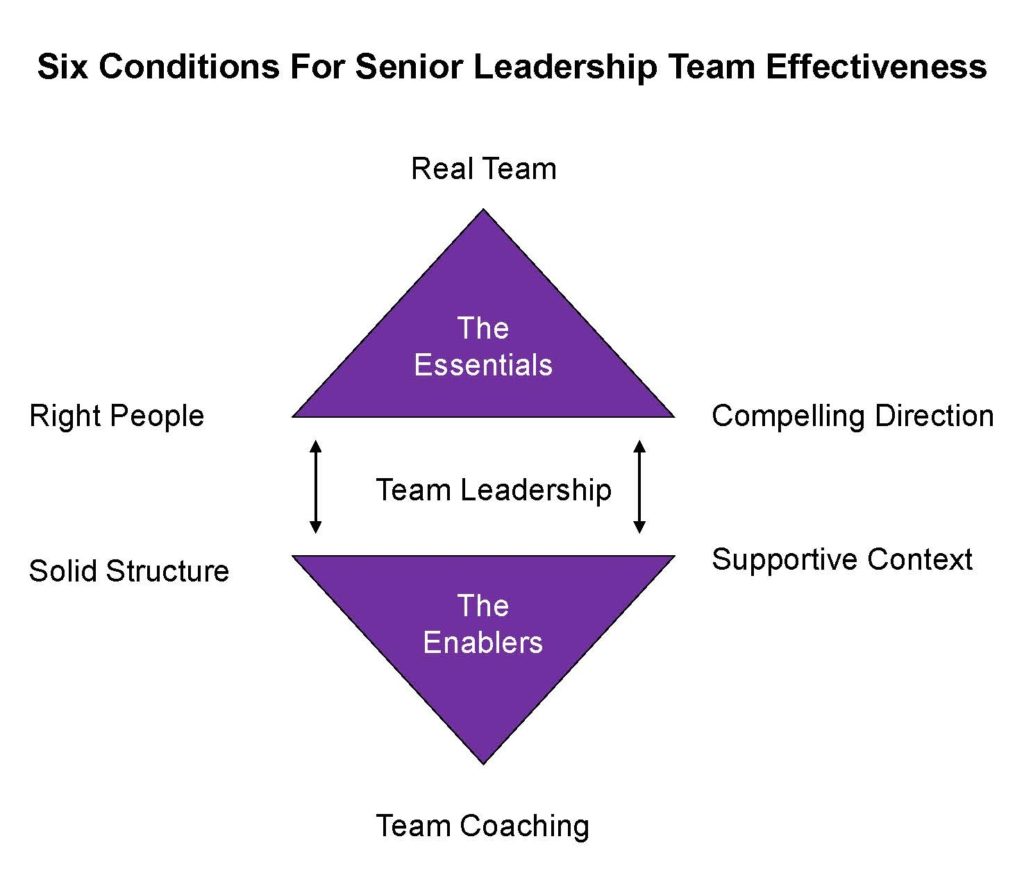Book review of “Senior Leadership Teams: What it Takes to Make Them Great,” by
Ruth Wageman, Debra A. Munes, James A. Burruss, and J. Richard Hackman

In my experience partnering with senior leaders, I often have observed that they don’t focus enough on their team’s shared work, and the team has problems pulling together so the organization advances. It’s crucial that the organization determines when a senior leadership team is needed, and if the answer is yes, for the CEO to pay careful attention to setting up this team.
That’s when you need this high quality, easy to read book with its comprehensive model. For team leaders, the model is actionable; for consultants, it’s easy to work with; and for clients it’s easy to learn. The authors have produced the best book written on the topic of senior leadership effectiveness. First published in 2008, it is a timeless treasure and my “go to” resource when working with senior teams.
This book’s clear, concise model and explanations of how to apply it are an essential resource for senior leaders, consultants, coaches and all leadership teams. The authors’ research into 100 top teams from around the world shows how to craft an effective purpose for your team, staff it with the right people, chose the right structure, sharpen team members’ skills, and get the team support. While focused on senior leaders, I have found the model relevant for all leadership teams.
Here’s a peek into the model:
 The six conditions of the model answer these questions:
The six conditions of the model answer these questions:
- Do I really need a leadership team?
- How do I define the purpose of my team?
- Do I have the right people on the team?
- How should I structure the team?
- What organizational support do I need to provide the team?
- Who can coach a team of leaders, and how they should do it?
Whether I’m engaged to consult on the start-up of a new top team, or work with an existing one, I refer to these questions and the model in this book.
For example, often I found that while a CEO may be clear about what (s)he wants from their team, unless they have an explicit conversation with the whole team, everyone has a different idea of why the team exists. Agreeing on what the top team should do is the central issue for the team – “What important work cannot be done by any single leader or by any other team?”. Once the CEO and team are clear on this, it drives who needs to be a member, how the team should be structured, and the support it needs.
Let me know what you think of these authors’ ideas and questions. How does your senior leadership team stack up? What opportunities do you see for improving its effectiveness?
Leave a Reply